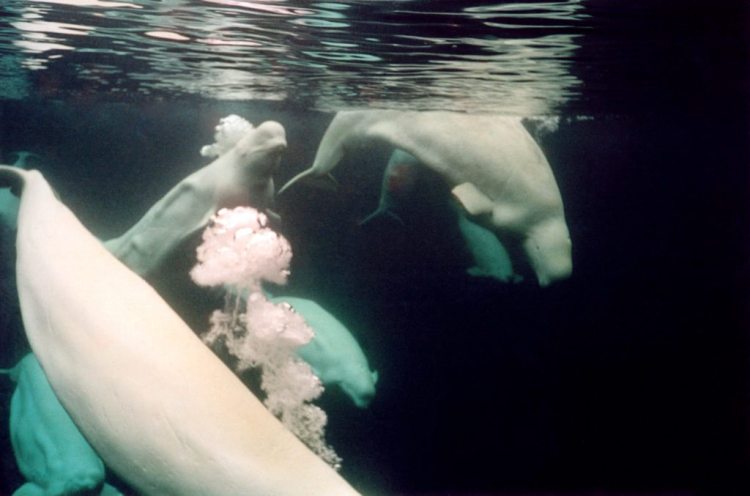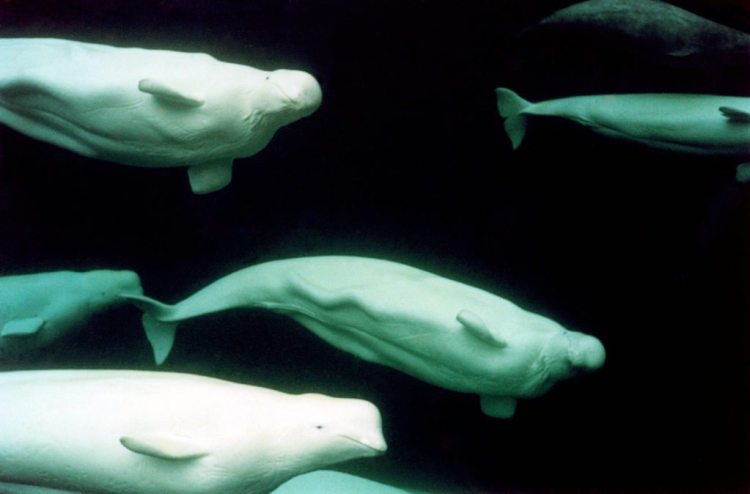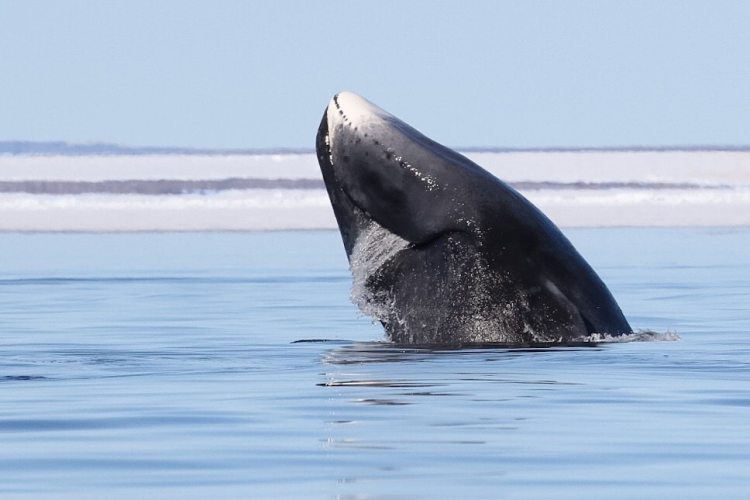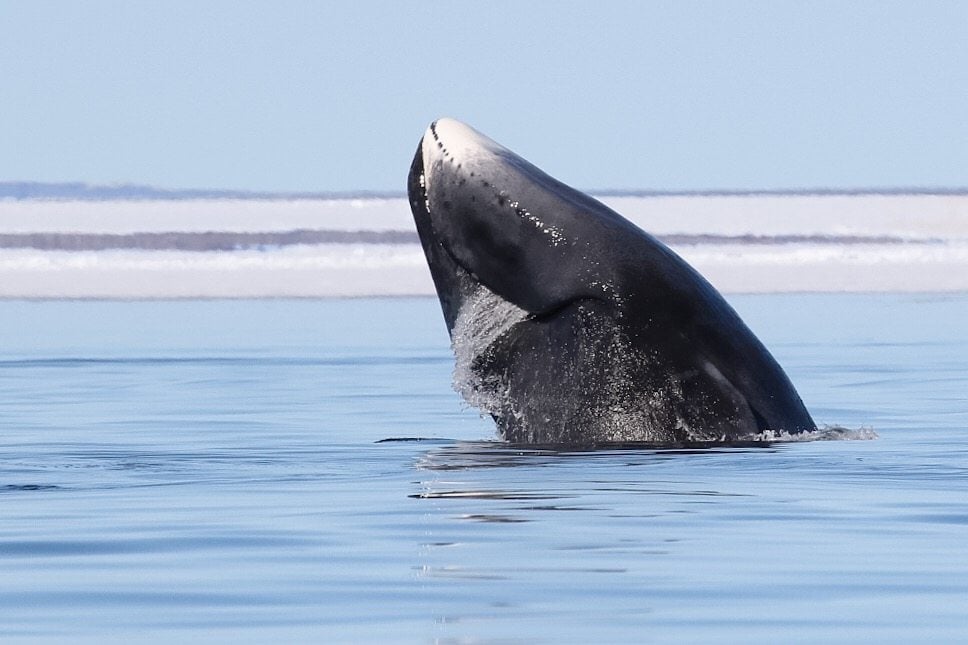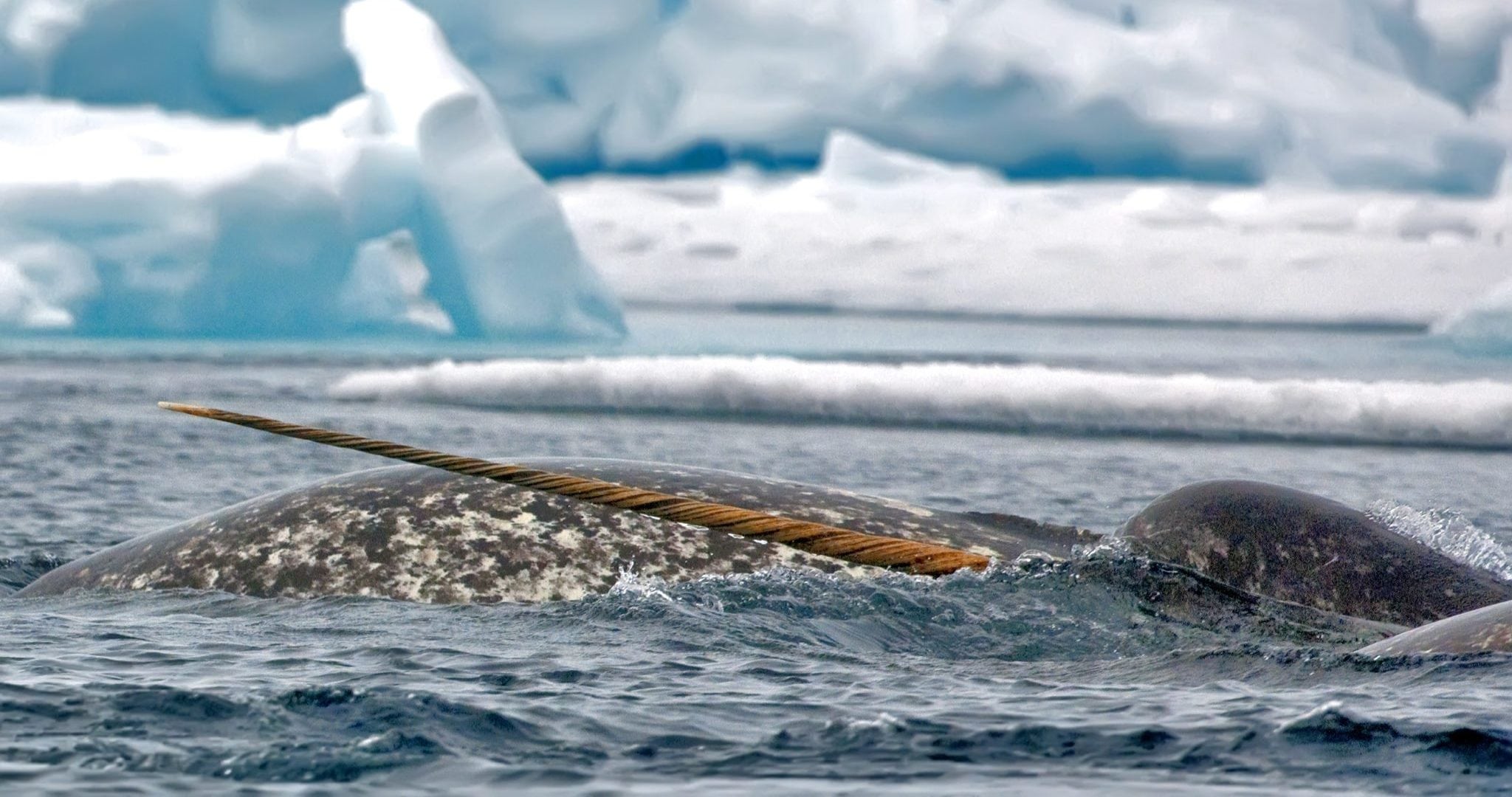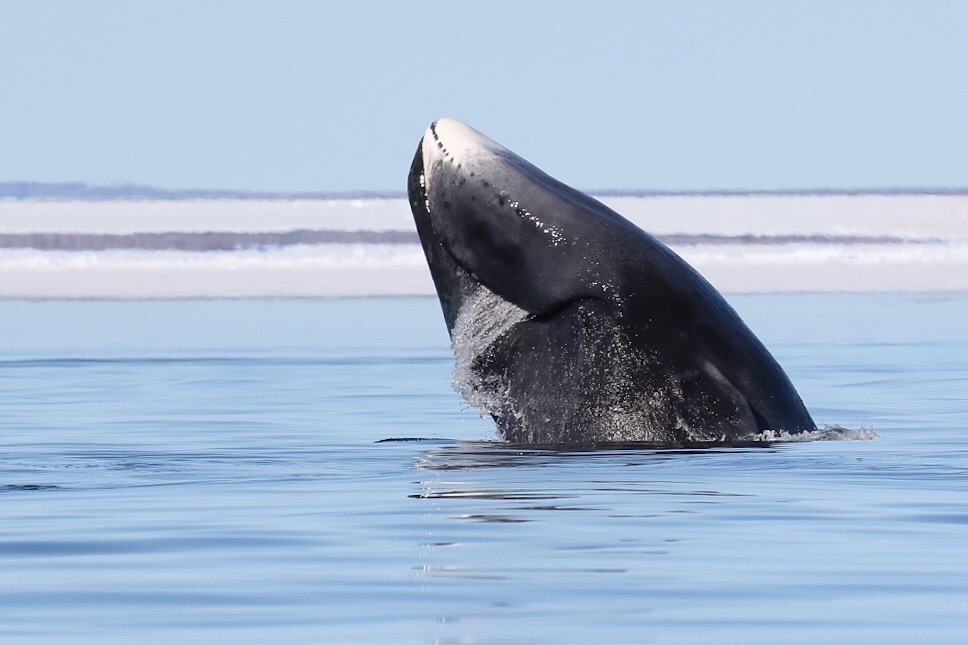Full of life, the floe edge is one of the natural wonders of the Arctic. In addition to opportunities to view polar bears, sea birds, and seals, the floe edge is a unique destination for whale watching in the Arctic.
Far from your typical whale watching excursion, visiting the floe edge in the high Arctic is an once-in-a-lifetime experience providing exclusive opportunities to view narwhal, beluga and bowhead whales.
Learn more about the whales you can spot at the floe edge in the Canadian Arctic:
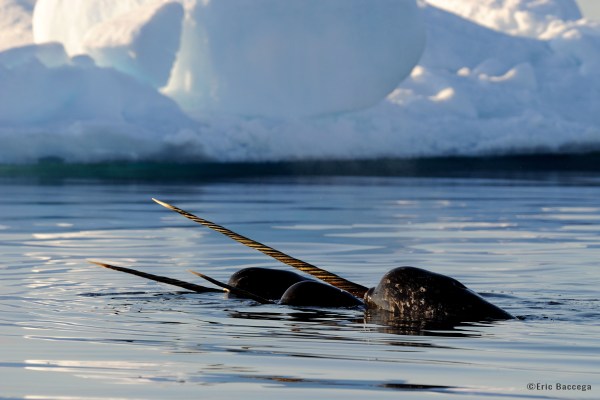
Narwhal
Known as the “unicorn of the sea” because of their iconic tusk, narwhal (monodon monoceros) are one of the most popular whales to see in the Arctic. They live year-round in the Arctic, generally above 61°N, and can only be seen in the wild – they have never been successfully kept in captivity.
Male narwhal can grow to over 5.4 m (17 ft) and 1935 kg (4265 lb), and females are slightly smaller. Only male and about 15% of female narwhal grow visible tusks. While rare, male narwhal have also been seen with two tusks.
In spring, narwhal congregate at the floe edge on the northern reaches of Baffin Island, Nunavut, during the annual migration to their summer feeding grounds. This allows rare opportunities for travellers and photographers to view narwhal up-close, from the sea ice.
Since narwhal tend to travel in pods, there is a possibility of seeing up to 50 at once!
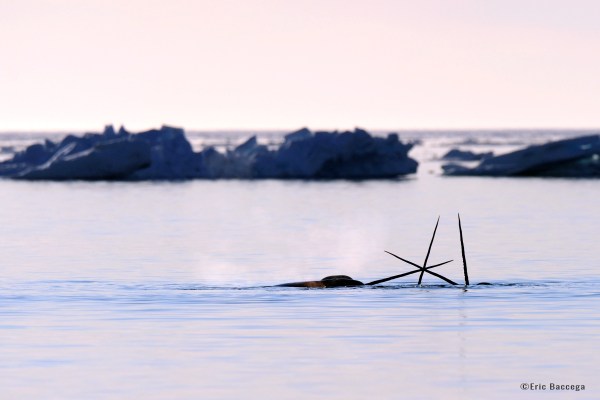
3 fun facts about narwhal:
1. Their tusk is actually a tooth that protrudes from the upper lip.
It’s a sensory organ with millions of nerve endings, and can measure up to 2 to 3 m (7 to 10 ft) in length. While there have been several theories about the use of the narwhal tusk, the rubbing together of tusks is thought to be a way to communicate information. Recent discoveries also indicate that narwhal use their tusks for feeding.
2. Narwhal are one of the deepest diving marine mammals.
In winter, they typically dive to at least 800 m (2,624 ft) and many will dive to 1,500 m (4,500 ft) for around 25 minutes. They can also spend more than 3 hours a day at depths below 800 m.
3. They change colour with age.
Newborn narwhal are speckled blue-grey, juveniles are blue-black, adults are speckled grey and old narwhal are almost all white.
How to see narwhal at the floe edge:
In May and June, you can get narwhal watching opportunities on Great Migrations of the Northwest Passage and Narwhal & Polar Bear Safari.
Beluga
Beluga (Delphinapterus leucas) or white whale, are another popular whale to see in pods at the floe edge. Inhabiting Arctic and sub-Arctic waters, belugas have adapted their all-white colour and absence of a dorsal fin for living in the Arctic. A smaller species of whales, their size ranges from 4 to 6 m (13 to 20 ft) and weigh 907 to 1,361 kg (2,000 to 3,000 lbs).
3 fun facts about beluga:
1. The bump on their head is called a melon.
While they are closely related to narwhal, instead of a tusk on their head, beluga have a round bump called a melon. The melon aids in echolocation and is used to make different communication sounds and facial expressions. They can also change the shape of their melon by blowing air around its sinuses to focus sounds.
2. Belugas are one of the most vocal whales, using a vast range of sounds.
Known as the “canaries of the sea”, they communicate using a diverse language of clicks, whistles, and clangs, and can also mimic a variety of other sounds including human speech.
3. Beluga have the unusual ability to turn their head without rotating the body.
Unlike other whales, the vertebrae in a beluga’s neck is not fused together allowing them to move their head up, down and side-to-side.
How to see beluga at the floe edge:
In June, you can have the chance to witness the annual migration of beluga, along with narwhal, from the floe edge of Lancaster Sound.
Get beluga watching opportunities on Great Migrations of the Northwest Passage.
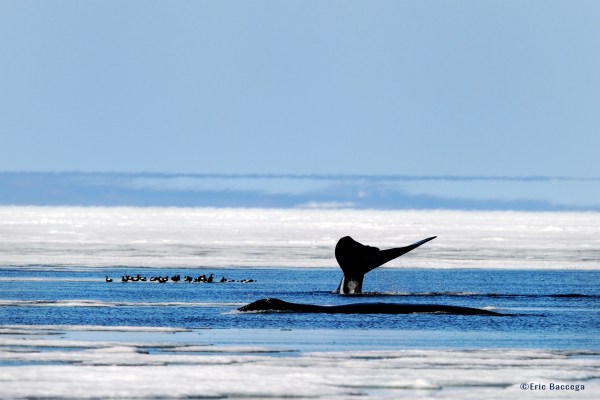
Bowhead Whales
These giants live year-round in the Arctic, and seeing them at the floe edge is an incredible experience. Bowhead whales (Balaena mysticetus) have an average size of 15 to 18 m (49 to 59 ft), but have been reported up to 20 m (65 ft), and can weigh up to a whopping 100 tonnes (220,462 lb)!
Like narwhal and beluga, bowheads lack a dorsal fin. They are known for their massive bow-shaped heads, making up about one third of their total length, which they use to break through sea ice as thick as 60 cm (23 in).
3 fun facts about bowhead whales:
1. Bowhead whales are one of the longest living mammals in existence.
Scientists believe they can live over 100 years, with some individuals estimated to have lived over 200 years.
2. They have the thickest layer of blubber of animal.
It can be up to 50 cm (19 in) thick.
3. Bowhead whales have two blow-holes.
They are located right beside each other on the “steeple” or small hump on their backs.
How to see bowhead whales at the floe edge:
In May and June, you can get the chance to view bowhead whales at the floe edge of Lancaster Sound on Narwhal & Polar Bear Safari.
In July, you can get opportunities to spot these large whales while exploring the floe edge of Foxe Basin by boat on Kings of the Arctic.

Want to visit the floe edge for whale watching in the Arctic?
Check out our floe edge experiences:
Great Migrations of the Northwest Passage – Departures in June
Narwhal & Polar Bear Safari – Departures in May and June
Kings of the Arctic – Departures in July
Contact one of our Arctic Travel Advisors here for more information on these trips and opportunities for whale watching in the Arctic.
Want to create a custom itinerary for whale watching in the Arctic?
Contact us today to start planning your Private Journey.


